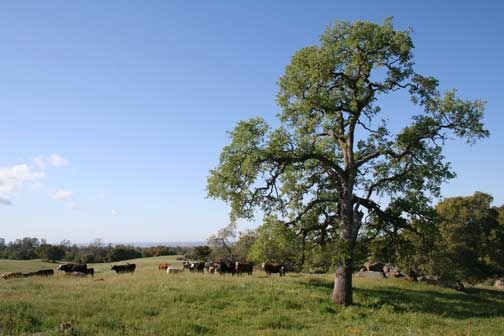Posts Tagged: weather
Birds, Bats or a Bloom? But No Splat!
Remember that massive green blob that showed up Tuesday night, June 4 on the National Weather Service (NWS) radar in San Diego, and NWS tweeted it...
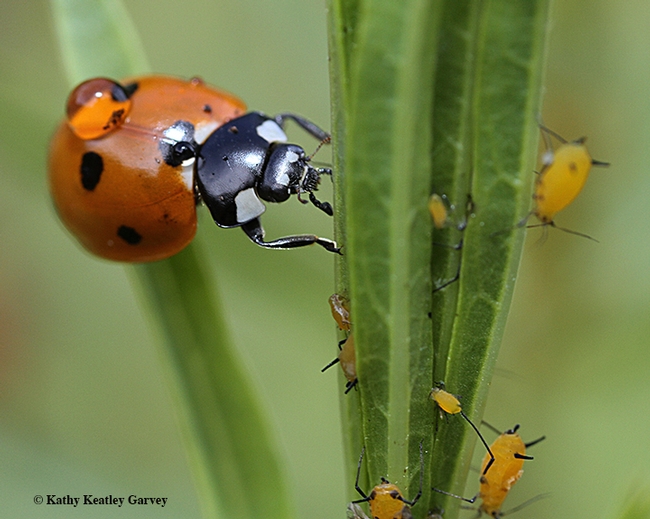
A lady beetle, aka ladybug, ready to devour aphids, its primary food source. Image taken in Vacaville, Calif. (Photo by Kathy Keatley Garvey)
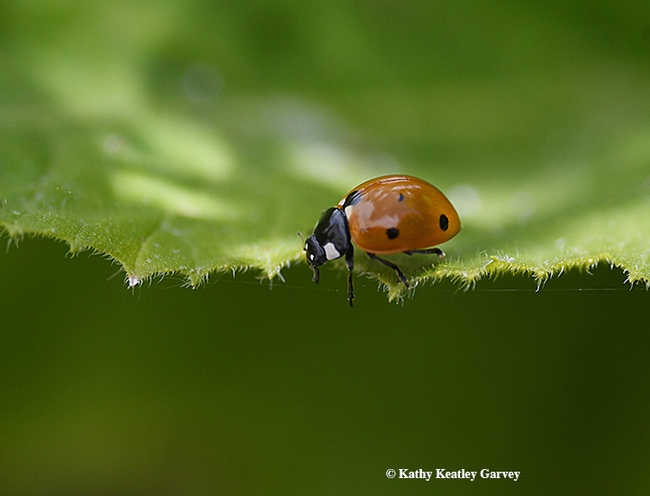
A lady beetle on the prowl in Vacaville, Calif. (Photo by Kathy Keatley Garvey)
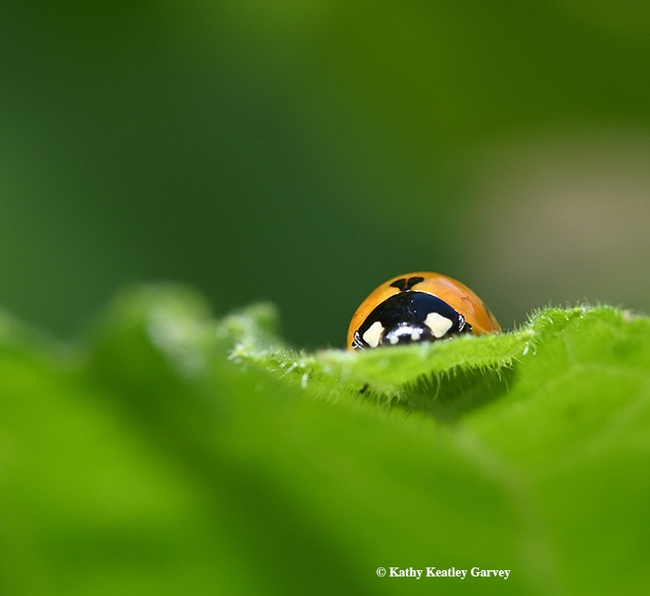
Peek-a-boo! A lady beetle peers over a leaf in Vacaville, Calif. (Photo by Kathy Keatley Garvey)
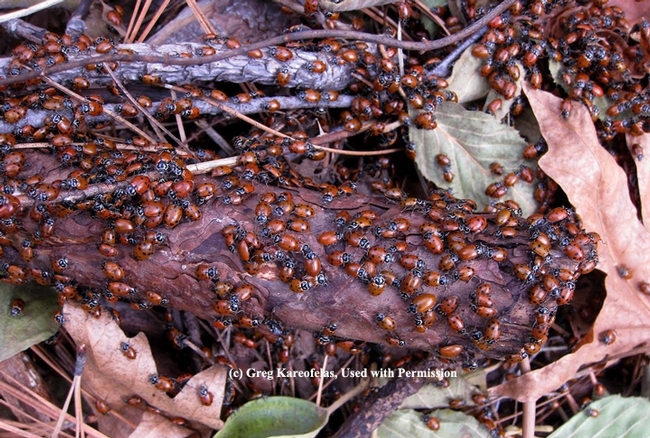
A congregation of overwintering lady beetles in California's Coast Range. (Photo by Greg Kareofelas)
Tired Garden
Anybody else thinking that their garden is looking pretty darn peaked? I always seem to have that thought around this time of the year. It's been several weeks of hot weather and no rain. The ground is baked hard as a rock, and everything seems to have bloomed out. I'm on the lookout for inspiration, but even browsing the local nurseries hasn't yielded much to work with. Thank goodness for my iceberg roses - without their constant blooms, my garden would be pretty empty of flowers.
I'm so glad that fall is just around the corner. I'm looking forward to the variety of color the garden offers in the fall. Another month and I'll head out to start on cleaning up, changing, moving, and planting. The best time to plant perennials in our area is the fall, because the plants have a chance to take root in the warm weather, followed by the cold dormant period. Plant in the spring, and the tender plants are quickly subjected to broiling heat.
For now, I'll just continue nursing along what I have out there.
Control is an Illusion
Our wacky spring weather has taught me a lesson, again: I am so NOT in control of anything in nature.
In my last blog, I pledged to get my tomato seedlings planted before the self-imposed deadline of April 15. Didn’t happen. I had to wait out the frost warnings and hailstorms that rolled through. Then when rain soaked the soil (which was really very welcome), I had to wait a few more days for it to dry out. But wait I did, and the tomato seedlings are now happily in the soil, soaking up warmth and sunshine, nearly doubling in size after just a week.
So patience paid off. I’ll try to remember that next year when tomato-planting season comes around.
This made me think of other areas of the yard where patience comes into play. We have three well-established rose bushes, which were planted by the previous owner of our 36-year-old home. Because I am not a rose fancier (the blossoms are lovely, but the plants are a thorny, unattractive pain, in my opinion), I have steadfastly refused to fuss over these roses. I do not prune them in winter. I do not spray off the aphids in spring. I do not deadhead the fading blossoms. I never, ever fertilize the plants. Mind you, I am not trying to kill them. I simply do not have any patience for the problems they bring.
You know what? Those darned roses thrive, putting on dinner-plate-sized blossoms all spring and deep-orange rosehips the rest of the year.
In that sense, having no patience (call it laziness or benign neglect) has its benefits. But, lesson learned: Mother Nature is driving this bus, not me. Guess I’d better buckle up and enjoy the ride.

The tomato seedlings finally made it in, despite Mother Nature’s insistence on mid-April frost, hail and heavy rain. Mother Nature does not have deadlines, apparently.(photos by Kathy Thomas-Rico)
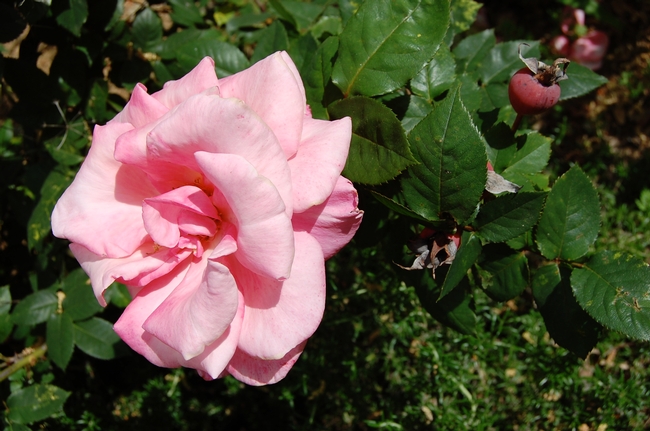
An utter lack of patience for rose care does not stop these plants from thriving. Who’s in control here?
California's rain is locked up in Alaska snow
Precipitation that would normally head toward California along the Pacific jet stream has for weeks veered north, burying Alaska in record snow, said an article by San Jose Mercury News reporter Lisa Kreiger. The story appeared yesterday in the Contra Costa Times.
The weather trend has left California drenched in sun this winter, but for many, sunny skies have worn out their welcome.
In the Central Valley, stock ponds are running dry -- and cows drink 10 to 15 gallons a day. Some ranchers are considering trucking in water or culling their herds, said Yuba City-based UC Cooperative Extension farm advisor Glenn Nadar. He predicts a surge in milk and beef prices.
Orchardists worry about their almond trees, whose buds are swelling -- but roots are dry. Winter wheat is also parched. To help, some water districts are diverting water into their canals.
"We're irrigating, which is unheard of," said farm advisor Franz Niederholzer, with UC's Cooperative Extension in Sutter and Yuba counties.
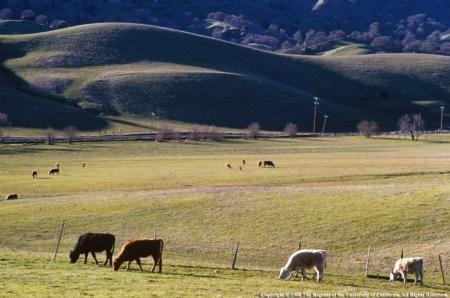
California ranchers may need to truck in water for their cattle.
California's fall weather is getting rangeland grasses growing
Germination occurred as a result of the season's first rains in October, but it didn't hold in some pastures because of the lull in precipitation, Davy said.
"This ought to get it up and going," Davy said of the rain that fell before Thanksgiving. "It usually takes between half and 1 inch in a week to get it sparked up and going, and we have definitely had that."
California farmers efficient, study finds
Tim Hearden, Capital Press
A Fresno State Center for Irrigation Technology research report says California farmers are more efficient in managing their water supplies than they're sometimes given credit for. As a result, large volumes of "new water" cannot be developed through agricultural water conservation.
The Fresno State irrigation experts' yearlong study aimed to update a 1982 University of California Cooperative Extension report, "Agricultural Water Conservation in California with Emphasis on the San Joaquin Valley." The new study says the 1982 report correctly framed the potential for agricultural water-use efficiency.


